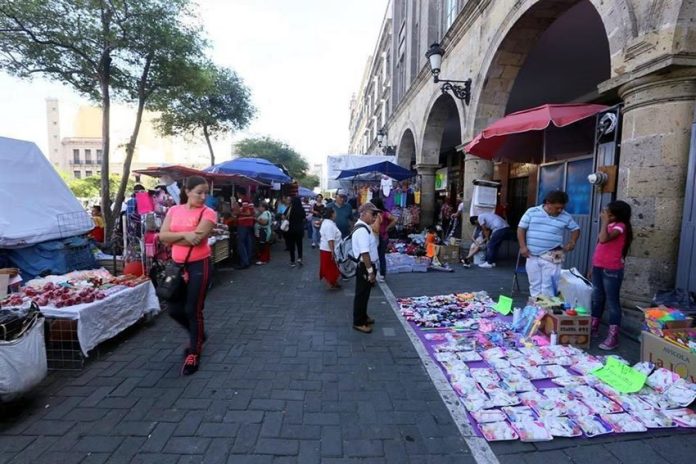Business owners in the historic center of Guadalajara have urged municipal authorities to draw up a plan to rehabilitate and repopulate the city’s downtown as part of a strategy to combat insecurity.
The historic center branch of the National Chamber of Commerce (Canaco) argues that the cornerstone of the plan should be the construction of high-rise housing on lots occupied by abandoned non-heritage buildings.
“Families should come and live here to start to create a social fabric,” said Alejandro Salas, the outgoing president of the downtown Canaco branch. “A master plan is needed just for this issue.”
According to the Guadalajara government, there are 624 abandoned or under-utilized dwellings in the center of the municipality as well as 268 vacant lots within the vicinity of Line 3 of the light rail that could be used for high-density housing developments.
In addition to insecurity, Salas said that homelessness and cleanliness of the streets were other issues that need to be addressed in the downtown area of the Jalisco capital.
At an event yesterday to swear in Salas’ successor, the president of the citywide chapter of Canaco issued a plea to local authorities to crack down on the rising number of street vendors in the historic center of the city using the strategy adopted by former mayor turned state Governor Enrique Alfaro.
“The increase of the informal economy concerns us, Mayor Ismael del Toro already knows that and it’s important to get down to work in that respect,” Xavier Orendáin said.
“Nowadays, street vendors have a strategy of setting up in the afternoon and in a lot of cases they bring problems of insecurity, piracy and other serious impacts to the community,” he added.
The new chief of Canaco in the historic center, Víctor Zetter, said there was a painful urban image of abandonment and danger in a lot of the streets” of Guadalajara’s downtown.
He added that residential and commercial areas of the city’s center that were once alive are now dead because “thousands of businesses, offices and residents falsely believed that leaving was progress.”
In response to the issues raised, Mayor del Toro said “our policy for the [historic] center has three pillars: zero tolerance for corruption, enforcing order and compliance with regulations – the [last] two allow us to have a safe city.”
He also said that his government was committed to rehabilitating the historic center following the loss of 2,500 jobs and a negative economic impact on business owners to the tune of an estimated 600 million pesos (US $31.5 million) during the construction of Line 3 of the light rail system.
Source: El Economista (sp), Informador (sp)
